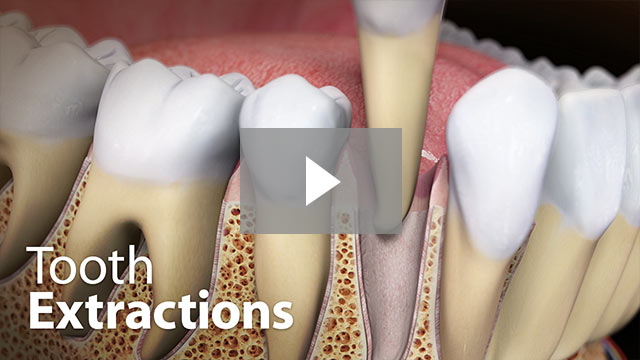Dental Services and Procedures
We offer various treatment options as well as diagnostic, preventive, cosmetic and restorative services. Your dentist will discuss the treatment options that are best suited to your diagnosis.
Dentures & Partials

If you’ve lost some or all of your teeth, Coast Dental has a solution for you! It is important to replace missing teeth in order to maintain a healthy smile. If missing teeth are not replaced, remaining nearby teeth can shift and affect your bite as well as your ability to eat and speak clearly. This can create problems with your jaw joint.
Without support from teeth, facial muscles can sag and make you look older. A denture or removable partial denture (partial) is often prescribed when a patient is missing multiple teeth and the surrounding teeth are healthy enough to support one.
A partial typically consists of prosthetic replacement teeth attached to gum-colored bases. Various methods and materials are available to attach them to your natural teeth. Partials are custom made in a dental laboratory to fit your mouth and match your gums, oral tissue and remaining teeth.
For more information, please visit our dentures and partials page.
Crowns
A crown is a type of dental restoration that covers an existing tooth and improves the appearance of your smile while strengthening your teeth. A crown can restore a tooth, cover badly shaped or discolored teeth, attach bridges, protect fractured teeth, attach to dental implants and improve the way your bite fits together.
Crowns, Bridges & Implants
Coast Dental offers a number of options to restore teeth that have been damaged or lost. We offer a number of surgical and non-surgical options including crowns, bridges and dental implants. Your dentist will advise you about the options that best meet your needs.
For more information, please visit our crowns, bridges and implants page.
Bridges
A bridge is a dental restoration that consists of one or more prosthetic teeth that bridge the gap created by missing teeth. When teeth are lost and not replaced, the remaining teeth will shift to fill the empty space and can cause more problems. If you are missing one or more teeth, you are more susceptible to periodontal (gum) disease, bone loss, speech impediments, tooth decay and collapsed bites. A bridge can help prevent teeth from drifting in and out of position, prevent the loss of teeth, restore your smile, maintain the shape of your jaw line and alleviate stress on your bite.
Orthodontics

A bridge is a dental restoration that consists of one or more prosthetic teeth that bridge the gap created by missing teeth. When teeth are lost and not replaced, the remaining teeth will shift to fill the empty space and can cause more problems. If you are missing one or more teeth, you are more susceptible to periodontal (gum) disease, bone loss, speech impediments, tooth decay and collapsed bites. A bridge can help prevent teeth from drifting in and out of position, prevent the loss of teeth, restore your smile, maintain the shape of your jaw line and alleviate stress on your bite.Crooked, crowded teeth are prime targets for tooth decay, gum disease and other health concerns. Poor jaw alignment often results in chipped, cracked and worn teeth, and may cause teeth to loosen. When left untreated, malocclusions, commonly referred to as a “bad bite,” may contribute to chronic headaches, face and neck pain.
The right orthodontic treatment is essential to preventing problems and correcting alignment issues.
With so many varieties in size, color and fabrication, braces are customized to fit your needs and lifestyle. Coast Dental orthodontists have access to the latest technology to help patients get a beautiful smile. Affordable payment plans are available for patients who qualify.
Oral Cancer Screening
An important part of the comprehensive oral evaluation is the advanced oral cancer screening exam. Approximately 70% of the time, abnormal areas are not visible until they have reached an advanced stage. When found in the early stages, oral cancer treatment is quicker, simpler and more than 90% successful. At Coast Dental we use Identafi, a non-invasive technology that enhances your dentist’s ability to identify, evaluate and monitor abnormal areas not visible in a conventional exam.
Root Canals

A root canal is a common dental procedure that is performed when the tooth’s soft core or dental pulp is cleaned out, and the remaining space disinfected and filled. If a crack, abscess or disease has damaged the pulp, a root canal is performed. At Coast Dental, we perform this procedure using the latest advancements in dental technology to minimize pain and recovery time.
A root canal requires one or more office visits and can be performed by a dentist or endodontist. An endodontist is a dentist who specializes in the causes, diagnosis, prevention, and treatment of diseases and injuries of the dental pulp or nerve of the tooth. The choice of which type of dentist to visit depends on the difficulty of the root canal procedure needed and the general dentist’s experience. Your dentist will discuss who is best suited to perform the work in your particular case.
Extractions

An extraction or tooth removal is required if a tooth is damaged beyond repair. Infection or severe tooth decay, crowding of teeth, periodontal disease and preparation for orthodontic treatment (braces) are other common reasons why an extraction may be required. An extraction can be performed by a general dentist, oral maxillofacial surgeon or periodontist, depending on the location of the tooth.
Many dentists recommend extracting impacted teeth that are only partially erupted. Bacteria can enter around a partially erupted tooth and cause infection, which can extend into the surrounding bone and become serious. Impacted teeth continue trying to break through the gum tissue even if there is not enough room to accommodate them. The continued pressure this causes can eventually damage the roots of nearby teeth. Removing a tooth that is impacted can often prevent infection, damage to adjacent teeth and bone, and prevent pain.
When a tooth is extracted or lost due to periodontal disease, the body no longer has use for the bone ridge around the socket and it begins to resorb or dissolve. This is similar to the atrophy that occurs when muscles go unused. We lose 40-60% of bone structure within the first couple years of an extraction or tooth loss.
Shrinking bone can make a smile unattractive and hinder a dentist’s ability to restore the lost tooth or teeth with properly fitting dentures or a dental implant.
Bone grafting helps restore the health and strength of the bone that supports teeth and can be performed by a:
- general dentist
- oral and maxillofacial surgeon
- periodontist
The dentist temporarily opens up the gums, filling the voids — including tooth sockets — with grafting material, then sutures the gums back in position.
Over the course of 3-9 months, the body works to repair the grafted site and grows new soft tissue and bone that strengthens the area. Dental implants, crowns, bridges and dentures can be placed on the newly enhanced foundation if needed.
For more information, please visit our tooth extractions page.
Dental Implants
Dental implants are a stable and secure surgical option for replacing one or more missing teeth. Your dentist will surgically place metal posts in the bone under your gums. Your bone will gradually grow around the implant and a replacement tooth will be attached to the metal post. Dental implants can also be used to secure a crown, bridge, or fixed dentures.
For more information, please visit our dental implants page.
Treatment Length
Some people respond to treatment more quickly than others. Active treatment, including the use of braces and retainers, often requires one to three years of treatment depending on the complexity of the case or oral condition.